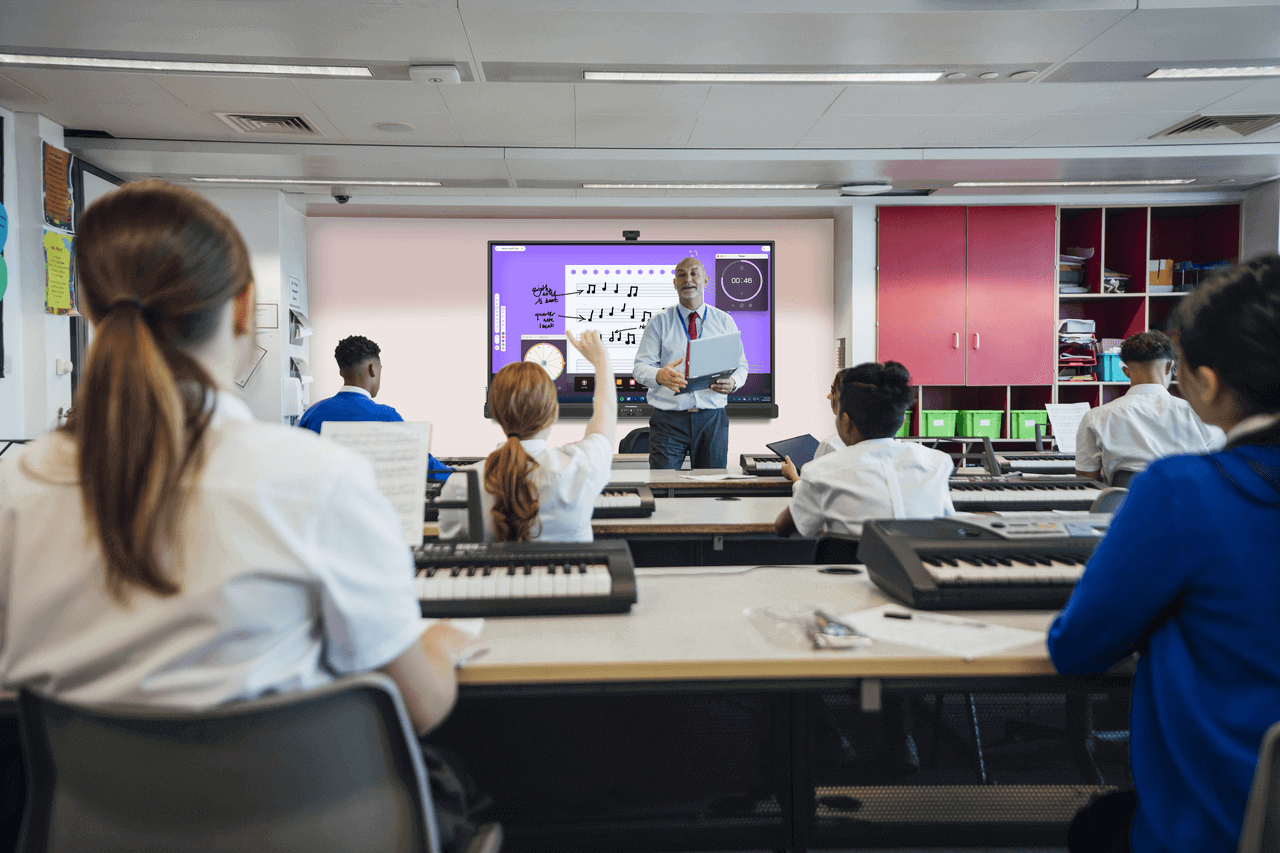Published on May 8th, 2023
How do educators feel about tech this year?
7 minute read

After several very challenging years in and out of the classroom, it may seem like there’s more “normalcy” in schools recently—but is this true? As an ever-evolving industry, education is never stagnant. Educators, administrators, parents, and students are all constantly exposed to new fads, new tech, and new ways to learn and innovate.
Technology in the classroom has been growing and changing for hundreds of years—from the wooden paddles called hornbooks students used in colonial times to the most advanced interactive panels utilized in the front of the classroom today. How are the most important influencers in education feeling about technology in 2023?
The 2023 State of Technology in Education report takes a deep dive into the thoughts and experiences of teachers, administrators, IT professionals, and students in communities around Europe, asking how they use technology in their environments and how important it is to evolve with technology as capabilities advance.
The evolution of education technology
From hornbooks to ebooks, history clearly shows new technology means increased student engagement. The most modern of the now-scarce tools, the blackboard, was invented in 1890. Until then, students in Europe and America used personal slates to communicate their learnings. While economical, it was inefficient, leaving teachers wanting to teach the class as a whole instead of individually writing down each assignment. Eventually, a school in Scotland hung a large piece of slate on the wall to provide information to a large audience at one time.
The pencil followed closely, making its debut 10 years later in 1900. From there, new tools were popping up all over the globe. Radios, overhead projectors, videotapes, hand-held calculators, scantrons, personal computers, tablets, and interactive displays have all helped pave the way to the future of education technology.
Higher tech adoption increases teacher confidence
Modern education technology has evolved faster than ever with more complex solutions over the last decade, sometimes bringing with it more challenges than before. Throw a global pandemic into the mix, and it’s been tough for teachers and administrators to simply maintain what they do, let alone find time to grow and learn new skills. Still, only 13% of educators surveyed feel they are less confident than they were previously, which is promising news.
How has edtech confidence changed over the last year?
Our study shows 45% of educators have either the same level of confidence or are more confident with using different education technology solutions than they were 12 months ago.
Breaking down the data by role, the report shows IT staff have gained the most confidence at 35%, closely followed by 31% of teachers and 16% of school administrators. Percentages similar to last year suggest a heavy appetite for edtech growth and progression wasn’t dampened by another challenging year.
How does technology impact an educator’s day-to-day role?
Educators’ lives are touched by technology every day with more tools to support students, an increase in active student participation, and even opportunities to advance in their careers. Most educators believe technology improves their teaching quality, with only 13% thinking technology is more trouble than it’s worth. As reported in the 2023 State of Technology in Education, technology impacts an educator’s role in these top five most popular ways:
- Engages students
- Enhances lesson plan delivery
- Helps with planning
- Improves teaching quality
- Increases productivity
Benefits of learning and teaching with education technology
Long gone are the days of thinking technology in the classroom is a just a distraction. Not only does education technology create a more engaged environment, but it better incorporates different learning (and teaching) styles, improves collaboration, prepares students for the future, and builds a stronger student-teacher relationship.
Favourite strategies: by the numbers
Implementing new ways to increase student engagement is always one of the most important things on any educators’ to-do list. When searching for unique ways to connect with their students, teachers had a few different ideas. According to this year’s State of Technology in Education report, here’s how the numbers stacked up in schools across Europe:
Social-emotional learning
26% of educators found it helpful to incorporate social-emotional learning strategies into their lesson plans over the last 12 months.
Personalized learning
51% of educators had success adding personalized learning strategies into their lesson plans over the last 12 months.
Hybrid learning
24% of educators had positive outcomes after adding more hybrid learning plans into their classrooms over the last 12 months.
Teacher availability
41% of educators found it helpful to offer more flexible availability outside of teaching hours over the last 12 months.
Blended Learning
14% of educators found it helpful to incorporate blended learning into their lesson plans over the last 12 months.
Accessible online content
40% of educators found it helpful to make content easy to find online over the last 12 months.
Virtual in the classroom
51% of educators found it helpful to incorporate more virtual experiences or virtual expert visits into their lesson plans over the last 12 months.
Interested in more trends and statistics from your peers?
Interested in more trends and statistics from your peers? Download the 2023 State of Technology in Education report to learn what matters most in education right now, including social-emotional learning, staffing shortages, and the future of edtech. And, learn how the Promethean ActivPanel can support engaged, personalized learning in your classroom.




